Daily maintenance of laying hens
The inside and outside of the egg cage are neat and tidy. It is necessary to ensure that there are no oil on each sliding surface, screw, rack, gear box, oil hole, etc., no oil leakage or air leakage in all parts, and chips, debris and dirt around the equipment. Clean and clean; tools, accessories, workpieces (products) should be placed neatly, pipes and lines should be organized; lubricated and oiled or oil changed on time, continuous oil, no dry friction, normal oil pressure, bright oil mark, smooth oil passage, oil The quality meets the requirements, the oil gun, oil cup and linoleum are clean; the safety operation rules are observed, the equipment is not overloaded, the safety protection device of the equipment is complete and reliable, and the unsafe factors are eliminated in time.
The daily maintenance of the egg cage is the basic work of equipment maintenance, and must be institutionalized and standardized. For the regular maintenance of equipment, work quotas and material consumption quotas shall be established, and assessment shall be carried out according to the quota. The regular maintenance work of equipment shall be included in the assessment content of the workshop contract responsibility system. Regular inspection of equipment is a planned preventive inspection. In addition to the human senses, the inspection methods must also have certain inspection tools and instruments. The inspections are carried out according to regular inspection cards. Regular inspections are also called periodic inspections. The mechanical equipment should also be checked for accuracy to determine the degree of accuracy of the equipment.
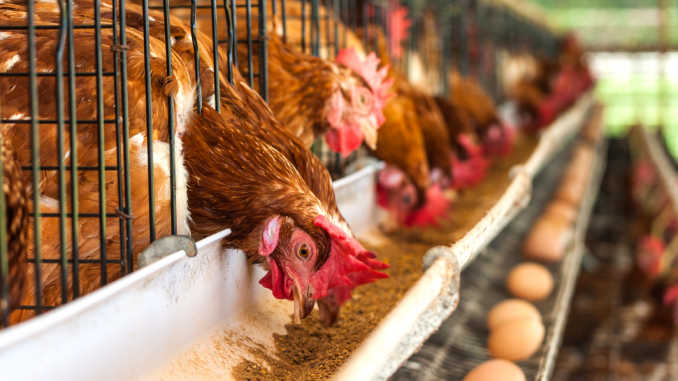
Layer chicken cages maintenance should be carried out in accordance with maintenance procedures. Equipment maintenance procedures are requirements and regulations for routine maintenance of equipment. Persistence in equipment maintenance procedures can extend equipment life and ensure a safe and comfortable working environment. Its main content should include:
1. The equipment should be neat, clean, sturdy, lubricated, anti-corrosive, safe, etc., the working content, working methods, tools and materials used, standards and precautions;
2. The parts, methods and standards for daily inspection and maintenance and regular inspection;
3. Check and assess the content and methods of operating workers to maintain equipment.
Environmental management of chicken farms
Feed chickens should be well managed in the Poultry Equipment for Sale and in the chicken farm. The chicken houses are not connected to each other to avoid cross-infection between chickens and chickens. The farther away from other chicken-farming units, the better the risk of disease transmission.
All houses must be thoroughly cleaned with high-pressure faucets. All tools in the house, such as electric fans, brooms, etc., must be cleaned; ensure that chicken farm personnel are not in contact with the outside flocks.
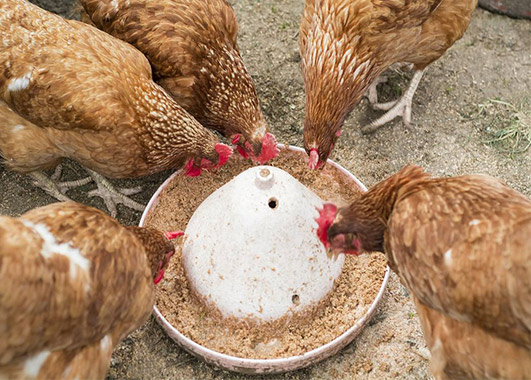
All houses must be disinfected with a broad spectrum of anti-virus agents that kill important pathogens; chickens of the same age should be started from the healthiest chicken feathers (usually the smallest chickens) when they are raised in the same farm. Workers are not allowed to return to the chicken house from the big chicken house until the clothes and boots have been properly cleaned and disinfected;
It is found that dead chickens should be taken out of the house immediately and disposed of immediately; non-essential personnel are not allowed to enter the outside of the chicken farm and are not allowed to enter unless they are cleaned and disinfected.
Environmental management of chicken farms
1. The chicken battery cages are not connected to each other to avoid cross-infection between the chickens and the chickens.
2. The farther away from other chicken-raising units, the better, thus reducing the risk of disease transmission;
3. All the houses must be thoroughly cleaned with high-pressure faucets. All tools in the house, such as electric fans, brooms, etc., must be cleaned;
4. Ensure that chicken farm personnel are not in contact with the outside flocks;
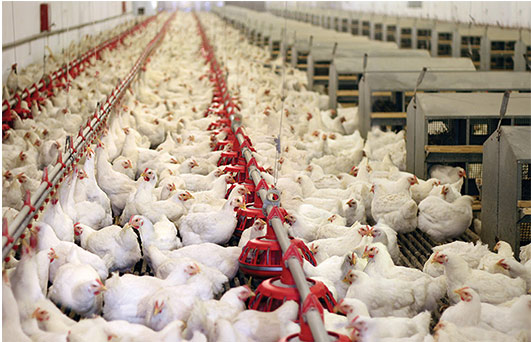
5. All chicken houses must be disinfected with a broad-spectrum cleaning agent that kills important pathogens;
6. Actively take measures to control rats, flies and stray animals. Once a mouse is present, use rodenticide or use a rodent-proof house to clear and control it;
7. When chickens of different ages are raised in the same chicken farm, the care of the chicken must start with the healthiest chicken feathers (usually the smallest chicken). Workers are not allowed to return to the chicken house from the big chicken house until the clothes and boots have been properly cleaned and disinfected;
8. If the dead chicken is found, the chicken house should be taken out immediately and disposed of immediately;
9. Workers must always wear clean clothes and boots when entering the house. Those who have been in contact with the big chicken-type laying hen must take a bath before entering the chicken house to save the person;
10. Non-essential personnel are not allowed to enter the chicken farm. Visitors must abide by the above rules;
11. Vehicles outside are not allowed to enter unless they are cleaned and disinfected.
Is the chicken house disinfected way right?
We all know that if we want to raise chickens, this part of disinfection plays a decisive role in breeding. It is reasonable to reduce the incidence of disinfection, which greatly reduces the cost of breeding. If the disinfection is unreasonable, it will waste money and delay the disease. Increase the incidence of flocks and reduce our economic benefits. Today we will come together to see how disinfection is the most correct.
1. The general situation of the chicken battery cages is to disinfect twice a week, at least once a week, and more frequently in the summer.
2. Two or more disinfectant products must be used alternately in the farm.
3. It is very important to thoroughly clean the farm before disinfection. It is very important not to dust the house, the roof spider web layer is layered, the ground is not cleaned, and disinfection is started. The disinfection effect is very poor. It is the same as no disinfection. This is also a mistake that many farmers' friends tend to ignore and easy to make. Everyone must pay attention.

4. 3 days after the vaccination vaccine, do not disinfect the chicken farm, and do not disinfect the chicken farm equipment. Otherwise it will greatly reduce the effectiveness of the vaccine.
5. When disinfecting with disinfectant water, whether it is summer or winter, it is not possible to spray the disinfectant directly onto the chicken. Instead, it is sprayed on the top of the hall or above the chicken cage. It can fall naturally on the chicken body and cannot be sprayed directly onto the chicken. To prevent the chickens from catching a cold.
6. When disinfecting in winter, try to use the Chinese medicine disinfection to fumigation, which can effectively prevent the chickens from catching a cold.
7. When using disinfectant for disinfection, it should be disinfected strictly according to the ratio. Do not increase the proportion of disinfection at random, so that it will not increase the disinfection effect and increase toxicity.
In short, the disinfection of chicken farms is very rigorous. If we can properly disinfect, it will greatly reduce the incidence of chicken farms, reduce our farming costs, and thus improve our economic efficiency.
Why Chicken immune failure
When we raise chickens in poultry farming equipment, it is common to vaccinate chickens to prevent disease, but sometimes it is still vaccinated. Why is this?
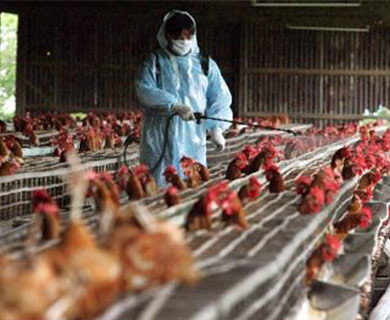
The first is that immunization is unscientific. The time of inoculation is not appropriate. Therefore, there is an inaccurate possibility of immune effect.
The second is that no antibody detection is performed. If the flock is in a special period, it is prone to immune failure without antibody testing.
The third is that the dose used for the vaccine is not accurate. It is not good for chickens to use large doses of vaccines.and is to cause adverse reactions after inoculation.
Main points of construction of broiler chicken cages
With chicken market increasingly competitive, and farmers modernization consciousness gradually improve, more and more farmers to standardization, scale breeding mode, build the henhouse chicken farming became the caged equipment now farmers choose mode of breeding, so farmers in the building of the hen house should be how to build?
1. Site selection: avoid intensive farming areas with better water quality.
2. Feeding mode: cage raising in two stages: "raising young" and "laying eggs".
3. Chicken battery cages construction: it is recommended to raise 15,000 to 20,000 chickens per chicken coop, adopt closed chicken coop and broiler cage feeding equipment, cement floor, wall white cement batch white, automatic drinking water, feeding, ventilation, manure cleaning, etc.
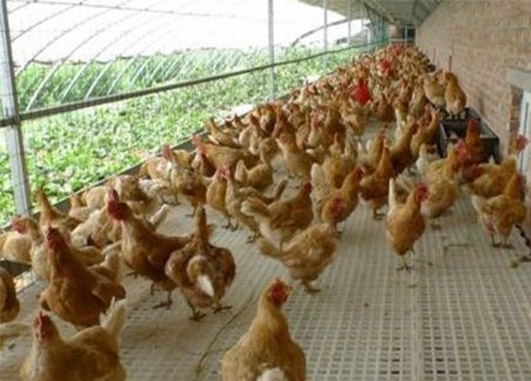
First, the overall layout of the chicken farm:
1. General principles: from the perspective of facilitating epidemic prevention and organizational production. The divisional layout of the field area is the production area, office area, living area, auxiliary production area, and sewage treatment area.
2. Arrangement principle: According to the dominant wind direction, the topography and the flow direction are the living area, office area, auxiliary production area, production area and sewage treatment area. If the terrain is inconsistent with the wind direction, the dominant wind direction is dominant.
Second, the layout of the chicken farm: the overall plan should consider the factors such as the orientation of the chicken house, the spacing of the house, the road, sewage, fire prevention and epidemic prevention. The recommended design of 100,000 large-scale chicken farms is recommended to be arranged in 6 single or double row chicken houses. The single chicken house is 16,000 closed chicken houses. It is equipped with four rows of four aisles and three-tiered ladder cages. Curtains, ventilated windows, mechanical cleaning, mechanical feeding and automatic lighting, automatic drinking water system.
1. Single-roof house orientation: It adopts east-west or east-north (or west) 15 degrees, which is conducive to improving the winter temperature and avoiding summer solar radiation, using the dominant wind direction to improve the ventilation conditions of the house.
2. Chicken house spacing: two types of single-row houses and double-row houses. The spacing of the chicken houses is 10 to 20 meters for brooding and 10 to 15 meters for laying hens.
3. Chicken farm road: The chicken farm road is divided into two types: clean road and dirty road. The clean road is used for transporting feed, chicken and eggs in the field. The dirt is used to transport manure, dead chicken and sick chicken. The two must not be used interchangeably.
What to do with soft shell eggs
For laying hens, egg production rate and egg quality are very important, and it is also directly related to the economic benefits of laying hens. If too much soft shell egg will affect the income, how should it be improved?
In fact, the main reason for the appearance of soft shell eggs is that the intake of calcium in the laying hens is insufficient. The lack of calcium leads to the thinning of the eggshells, so there will be soft shell eggs or even shelless eggs, so it must be in daily breeding. Pay attention to the calcium supplementation of laying hens. The calcium required for eggshell formation is mostly derived from feed, so feed is an important factor.
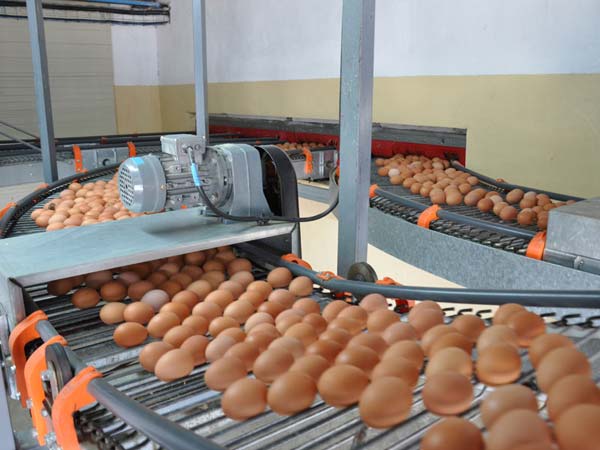
For calcium supplementation in laying hens in poultry farming equipment for sale, it is necessary to choose a suitable calcium material. Usually, when calcium is added to the laying hen, two or more kinds of calcium materials can be selected for calcium supplementation,which is better.
The best time for calcium supplementation is mainly 2-4 pm, which is most suitable because only the calcium absorbed in the afternoon or evening will participate in the formation of the eggshell at night, and the afternoon is the peak of the feeding of the hens in the afternoon. At this time, the appetite is high and the food is eaten, so the effect of calcium supplementation at this time is the best.
The higher the calcium content of the feed, the better, otherwise it will be unfavorable for laying eggs. Timely calcium supplementation for laying hens will have a good benefit. If the calcium content is insufficient, it will lead to an increase in the production of soft shell eggs and a certain loss.
Advantages of broiler cage equipment
The use of broiler cage equipment is common in many large and medium-sized chicken farms. Except for some farms that are used to free-range, most chicken farms choose to use broiler cage equipment as a device for raising chickens. The broiler cage manufacturers said that the use of broiler cage equipment can collect and manage chickens, save energy, and effectively reduce the incidence of poultry diseases. Let's talk about the advantages of broiler cage equipment.
1. High degree of automation: automatic feeding, drinking water, clearing dung, wet curtain cooling, centralized management, automatic control, saving energy, improving labor productivity, reducing the cost of artificial breeding, and greatly improving the breeding efficiency of farmers.
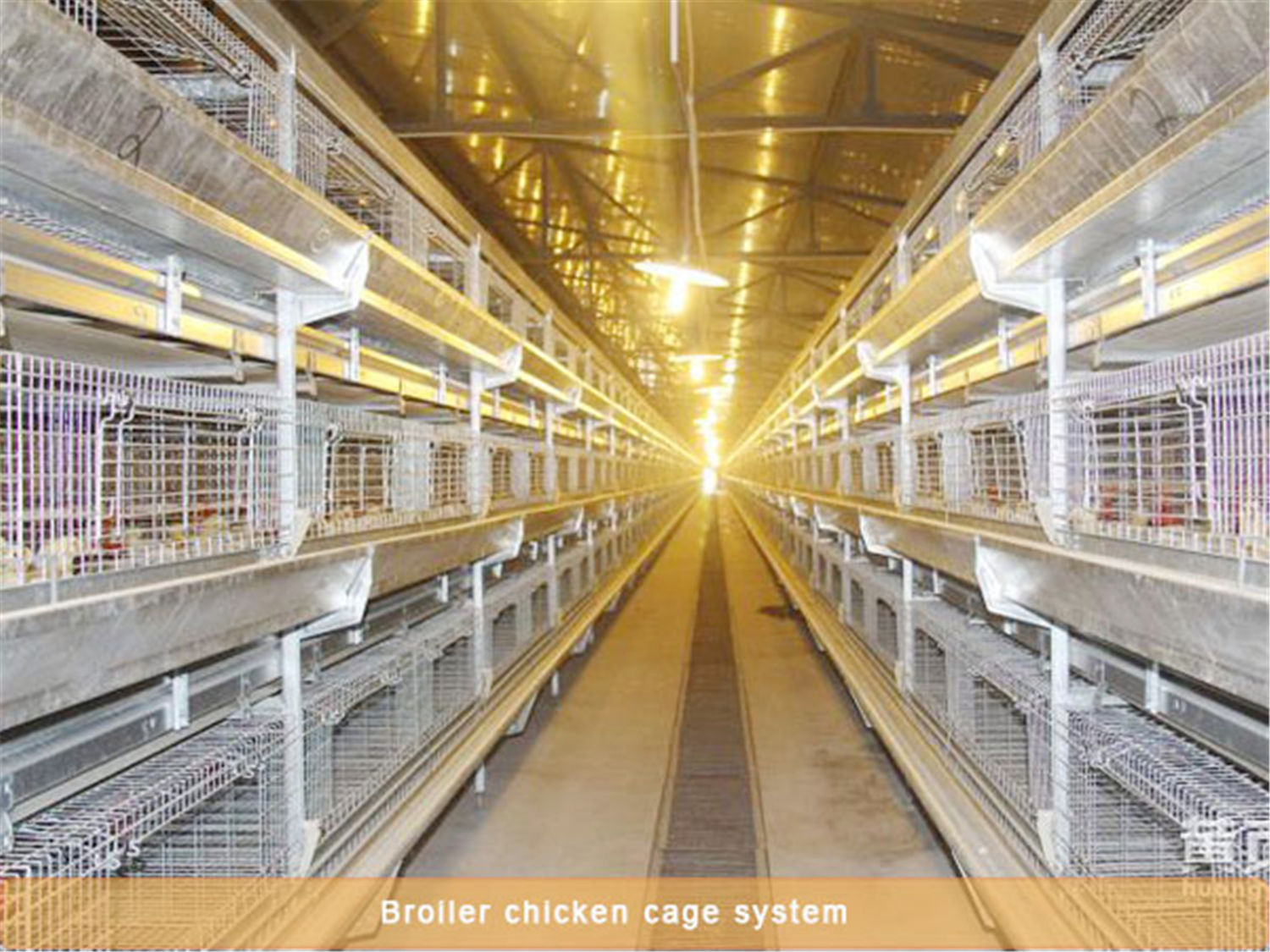
2. The flock is well-prevented and effective in preventing infectious diseases: chickens do not touch the feces, which can make the chickens grow healthier and provide a clean and comfortable growing environment for the chickens.
3. Save space and increase stocking density: The cage density is more than 3 times higher than the flattening density.
4. Saving farmed feed: caged chickens can save a large amount of farmed feed, chickens are kept in cages, the amount of exercise is reduced, energy consumption is small, and waste materials are reduced. The data show that cage farming can effectively save more than 25% of farming costs.
5. Rugged and durable: The caged broiler complete set of equipment uses hot dip galvanizing process, corrosion resistance, aging resistance, and the service life can be as long as 15~20 years.
Four key points for raising chicken to supplement light
In the process of raising chickens in laying hens, the farmers know that the hens need reasonable illumination, and the natural light often does not achieve good results. Therefore, when the chickens are illuminated, they need to use artificial lighting equipment for artificial replenishment. Reasonable illumination is beneficial to the growth and production performance of laying hens, so it is a very important task. The author reminds farmers to pay attention to the following four points in addition to the time to light and the number of lighting equipment:
1. The chicken farming equipment illumination should be stable: the time for the average farmer to choose to supplement the light for the laying hens starts from the age of 19 weeks. When the light setting time is set, the light should be slowly increased from short to long, increasing by half an hour every week. It is appropriate. Farmers should pay attention to the fact that when the light is increased to 16 hours a day, it should be kept in stable light, and then the daily light can not be long and short. The best way is to add light every morning and evening.

2. The intensity should be suitable: the farmers should pay attention to the light intensity of the lighting equipment. For normal laying hens, the required light intensity is generally 2.7 watts, but the multi-layer culture mode of the egg cage culture, so the bottom layer The flocks are not easy to feel the light, so it should be improved when setting the light intensity, generally 3.3 to 3.5 watts per square meter.
3. The illuminance should be uniform: the farmers should pay attention when installing the lighting equipment. We suggested that the bulbs installed in the chicken houses of the farmers should be 40 to 60 watts, and then the height of the lamps should be set at about 2 meters. The distance between the bulbs is recommended to be about 3 meters. In addition, the farmer should pay attention to the fact that if your house needs to install more than two rows of bulbs, you should cross them so that the light is even, the distance between the wall and the wall. Should be half of the bulb spacing, should also pay attention to replace the broken bulb at any time, wipe the bulb once a week to maintain the proper brightness in the house.
4. It is advisable to use red light: there are many kinds of light colors in the lighting equipment. Farmers should pay attention to the different light colors of the lighting equipment when they choose, and the wavelengths are different. Tests have shown that hens under red light have higher egg production rates than hens under other light conditions when other conditions are the same, so it is recommended that farmers choose red light equipment.
Empty chicken house management
The chicken house should be cleaned up always, and the empty chicken house also need cleaned . After the chickens are transferred out, in order to provide a safe environment for the future chicken flocks and surrounding chicken flocks, the house must be empty for at least 20 days. Management of key links such as cleaning, rinsing and disinfection.
Clean the material tower, feed storage room and trough to avoid waste of feed, and clear the chicken manure from the chicken house to ensure the chicken manure treatment in the chicken house. Chicken manure outside the chicken house. First clean it in a bag, clean it, rinse the road with clean water, and finally spray disinfection.
Clean the drinking water system, power supply system, cages and other equipment and facilities; protect the electrical equipment control switches in the house. When arranging the house, try not to remove the facilities and items from the house. It should be arranged, washed and disinfected in the house. If the facility or item must be removed, strict cleaning and disinfection should be carried out before removal to prevent contamination of other areas.
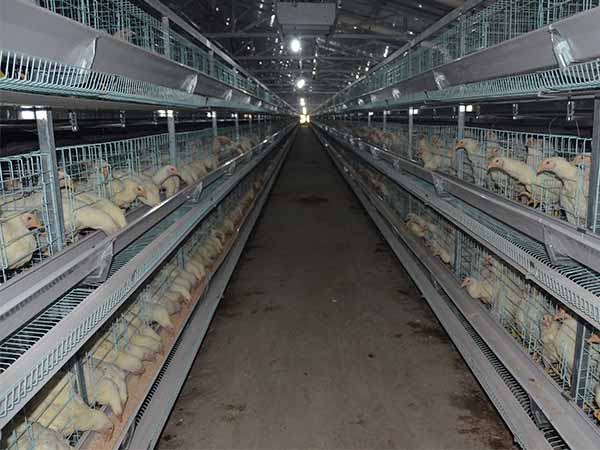
The poultry cage equipment can be washed 2 to 3 days after the house is finished. In the process of rinsing, according to the principle of first, then, after, after, after and after, to ensure the rinsing effect and work efficiency, at the same time, it can also save costs. After rinsing and finishing, check the working effect. If the rinsing is unqualified, it should be re-rinsed immediately. And check again.
After the house is washed clean, the water pipes of each floor should be adjusted to the appropriate height, and all the equipment in the house (including feeding, ventilation, scraping, lighting, drinking water, temperature supply, etc.) should be thoroughly overhauled, all preparations Do it.
